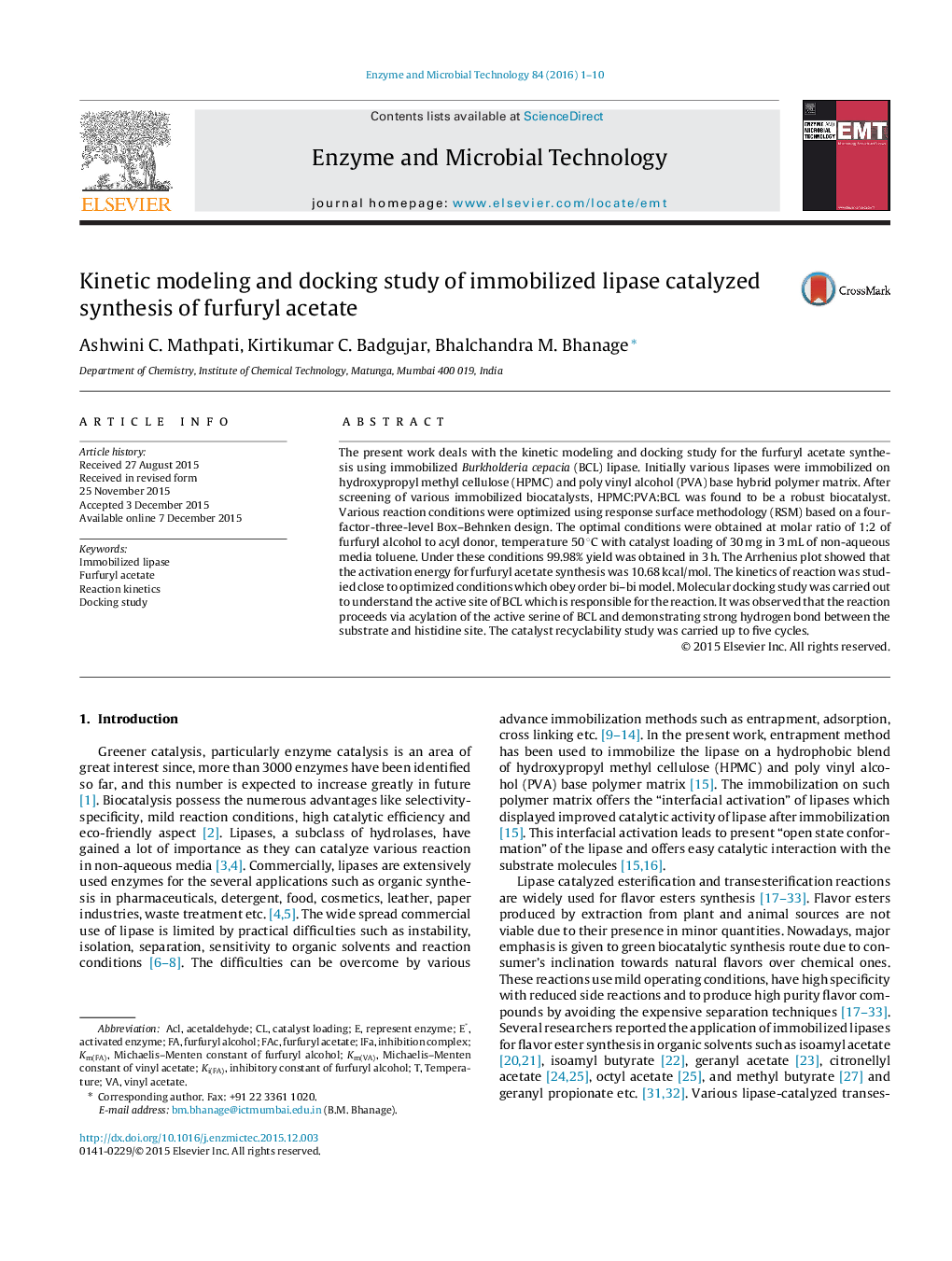| Article ID | Journal | Published Year | Pages | File Type |
|---|---|---|---|---|
| 16820 | Enzyme and Microbial Technology | 2016 | 10 Pages |
•Heterocyclic furfuryl acetate was synthesized (>95% yield) by immobilized lipase.•Immobilized biocatalyst was efficiently recycled upto 5 times.•The immobilized lipase showed 6.6 folds higher activity than free lipases.•Kinetic study was performed to understand the substrate-enzyme interaction.•Molecular docking study shows binding site of furfuryl acetate in the enzyme cavity.
The present work deals with the kinetic modeling and docking study for the furfuryl acetate synthesis using immobilized Burkholderia cepacia (BCL) lipase. Initially various lipases were immobilized on hydroxypropyl methyl cellulose (HPMC) and poly vinyl alcohol (PVA) base hybrid polymer matrix. After screening of various immobilized biocatalysts, HPMC:PVA:BCL was found to be a robust biocatalyst. Various reaction conditions were optimized using response surface methodology (RSM) based on a four-factor-three-level Box–Behnken design. The optimal conditions were obtained at molar ratio of 1:2 of furfuryl alcohol to acyl donor, temperature 50 °C with catalyst loading of 30 mg in 3 mL of non-aqueous media toluene. Under these conditions 99.98% yield was obtained in 3 h. The Arrhenius plot showed that the activation energy for furfuryl acetate synthesis was 10.68 kcal/mol. The kinetics of reaction was studied close to optimized conditions which obey order bi–bi model. Molecular docking study was carried out to understand the active site of BCL which is responsible for the reaction. It was observed that the reaction proceeds via acylation of the active serine of BCL and demonstrating strong hydrogen bond between the substrate and histidine site. The catalyst recyclability study was carried up to five cycles.
